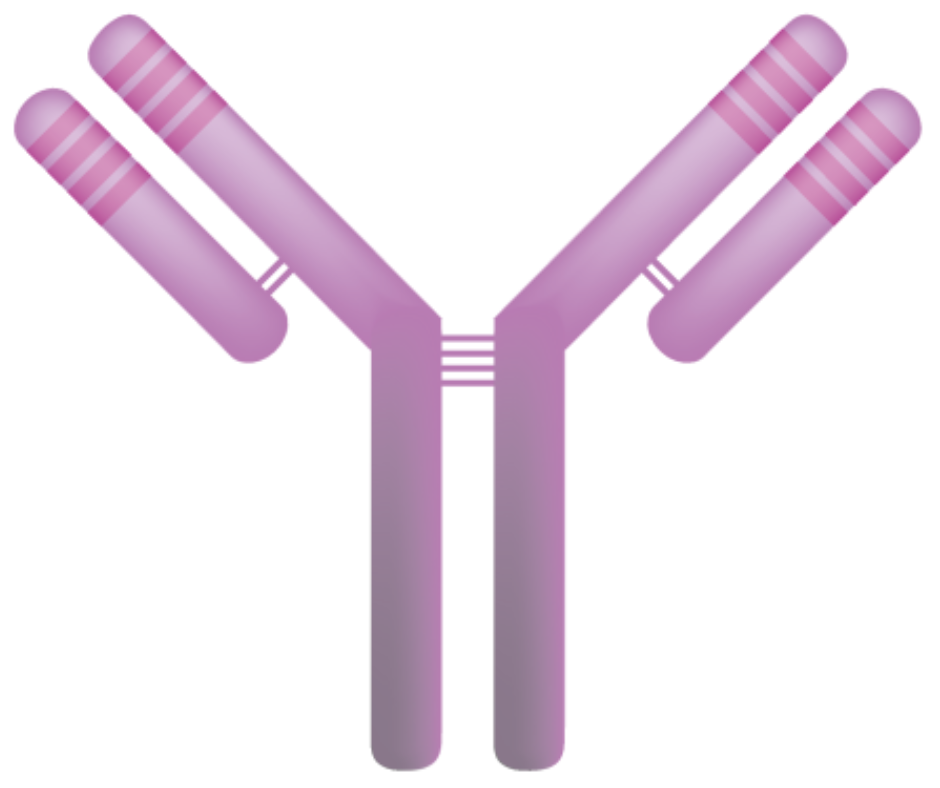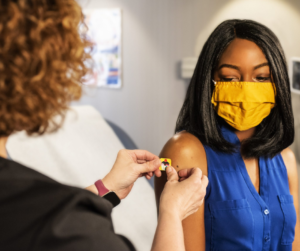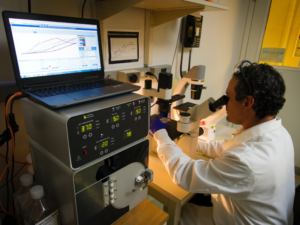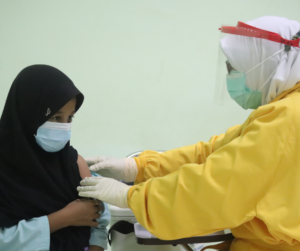Marissa Duco, PharmD | Dec 13, 2021 10:11:28 AM
Immunoglobulin light-chain (AL) amyloidosis is a malignancy of the plasma cells which express CD38 and produce misfolded proteins that lead to organ damage, primarily of the heart and kidneys. The standard treatment of AL amyloidosis is bortezomib, cyclophosphamide, and dexamethasone which is derived from multiple myeloma, another plasma cell malignancy. Because this is a rare malignancy, patients often have delays in diagnosis, more advanced organ involvement and therefore poorer prognosis.1 For this reason, advancements in the management of AL amyloidosis are sought after to improve outcomes. Daratumumab is a CD38 targeted monoclonal antibody that has shown benefit in the treatment of multiple myeloma.2 In the randomized, phase 3 ANDROMEDA trial, efficacy of subcutaneous daratumumab in addition to the standard treatment was assessed in patients with newly diagnosed AL amyloidosis.3
What patient population was eligible for inclusion in the ANDROMEDA trial?
Eligible patients included adults, 18 years of age or older, with a histopathologic diagnosis of systemic AL amyloidosis, measurable hematologic disease, and an Eastern Cooperative Oncology Group performance-status of 0-2. Patients were excluded if they had prior treatment, symptomatic multiple myeloma, estimated glomerular filtration rate less than 20 mL/min/1.73m2, or evidence of severe cardiovascular condition (N-terminal pro-B-type natriuretic peptide > 8500 ng/L, systolic blood pressure < 90 mmHg, or New York Heart Association classification of stage IIIB or IV).
Patients were randomly assigned 1:1 to receive the standard treatment alone or the standard treatment plus subcutaneous daratumumab. The standard treatment included subcutaneous bortezomib 1.3 mg/m2, intravenous cyclophosphamide 300 mg/m2 with a maximum of 500 mg, and oral dexamethasone 20 or 40 mg once weekly for 6 cycles of 28 days each. Subcutaneous daratumumab was given as a flat dose of 1800 mg weekly in cycles 1 and 2, every 2 weeks in cycles 3-6, and every 4 weeks until disease progression for a maximum of 24 cycles.3
What were the key endpoints and assessments of the ANDROMEDA trial?
The primary endpoint was hematologic complete response in the intention-to-treat population. Key secondary endpoints included survival free from major organ deterioration or hematologic progression, organ response, overall survival, hematologic complete response at 6 months, hematologic very good partial response or better, time to and duration of hematologic complete response, time to next treatment, and reduction in fatigue.3
What were the efficacy results of the ANDROMEDA trial?
This study randomized 388 patients, 195 in the daratumumab group and 193 in the standard treatment group. Baseline characteristics were well matched between the treatment groups; randomization was stratified based on cardiac stage, availability of transplantation, and renal function. One-hundred and four patients (53.3%) compared to 35 patients (18.1%) achieved a complete hematologic response in the daratumumab group and standard therapy group respectively (P < 0.001). Survival free from major organ deterioration or hematologic progression was longer in the daratumumab group (HR 0.58, 95% CI 0.36-0.93, P = 0.02). Other key secondary outcomes also favored treatment with the addition of daratumumab, except overall survival, which showed no difference between the groups after a median follow up of 11.4 months.3 Longer follow up is necessary to assess the impact of daratumumab on overall survival in AL amyloidosis.
What were the safety results of the ANDROMEDA trial?
For the safety analysis, 193 patients were included in the daratumumab group and 188 in the standard treatment group. The most common grade 3 or 4 adverse events were infections (16.6% vs 10.1%), lymphopenia (13.0% vs 10.1%), pneumonia (7.8% vs 4.3%), and neutropenia (5.2% vs 2.7%). Discontinuation due to adverse events was comparable between groups (4.1% with daratumumab compared to 4.3% with standard treatment). Administration related reactions occurred in 7.3% of patients receiving daratumumab, all grade 1 or 2, and 86% of those were associated with the first dose.3
What dosage of subcutaneous daratumumab is recommended for use?
Daratumumab and hyaluronidase-fihj is given subcutaneously as a flat dose of 1800 mg daratumumab and 30,000 units hyaluronidase. It is a 15 mL injection recommended to be given over 3-5 minutes. Pre-medication with a corticosteroid, acetaminophen and a histamine-1 receptor agonist are recommended to prevent administration related reactions.4
Based on the efficacy and safety data of daratumumab, what is the current US Food and Drug Administration (FDA) indication for use?
Daratumumab and hyaluronidase-fihj was granted accelerated approval by the US FDA for newly diagnosed light-chain amyloidosis in combination with bortezomib, cyclophosphamide, and dexamethasone.5 Other indications include treatment of multiple myeloma.4
References:
- Systemic Light Chain Amyloidosis. NCCN Clinical Practice Guidelines in Oncology. Version 1.2022.
- Voorhees PM, et al. Daratumumab, lenalidomide, bortezomib and dexamethasone for transplant-eligible newly diagnosed multiple myeloma: the GRIFFIN trial. Blood. 2020; 136(8): 936-945.
- Kastritis E, et al. Daratumumab-Based Treatment for Immunoglobulin Light-Chain Amyloidosis. N Engl J Med. 2021; 385:46-58.
- DARZALEX FASPRO® (daratumumab and hyaluronidase-fihj) [package insert]. Horsham, PA. Janssen Biotech, Inc., 2020.
- FDA grants accelerated approval to Darzalex Faspro for newly diagnosed light chain amyloidosis. Food and Drug Administration. January 15, 2021.

Marissa Duco, PharmD







